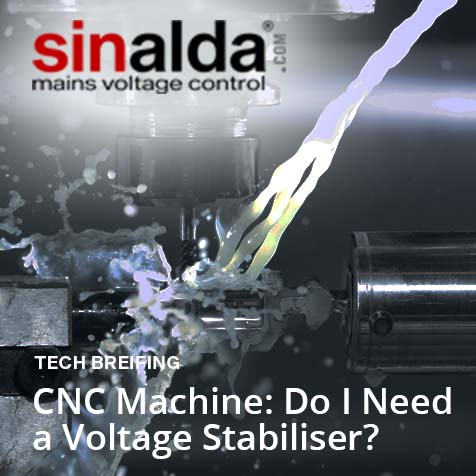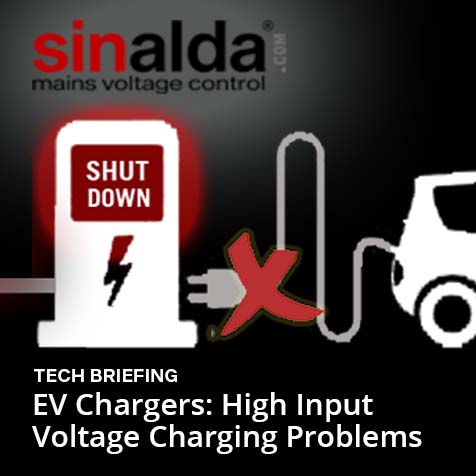Voltage Problems with Small, Low-Cost Single-Phase Petrol/Diesel Generators
With the greater use of single-phase petrol and diesel generators (≤ 10kVA) for residential, light commercial and leisure use, the quality and stability of the electricity they generate are causing severe issues for many users.
Here at Sinalda, we are regularly asked if we can supply a voltage stabiliser/power conditioner to enhance the stability and quality of the derived power from these small, low-cost generators.
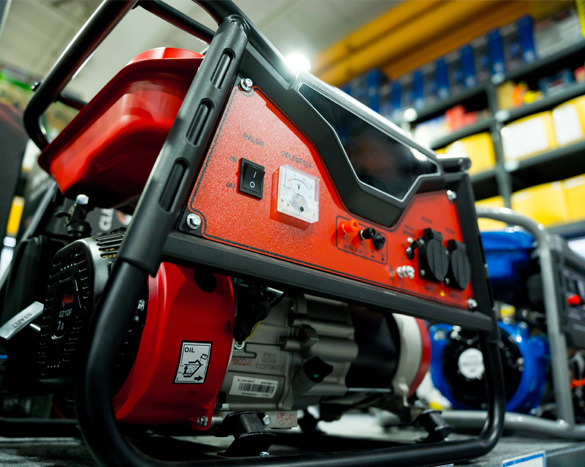
Whether a Voltage Stabiliser can be the solution depends on the generator type being used and the nature and level of the load the generator supports.
Generators Types
In the market today, two types of low-cost single-phase generators are available: Conventional and Inverter generators. Both are designed to produce electricity but operate differently and have distinct advantages and disadvantages.
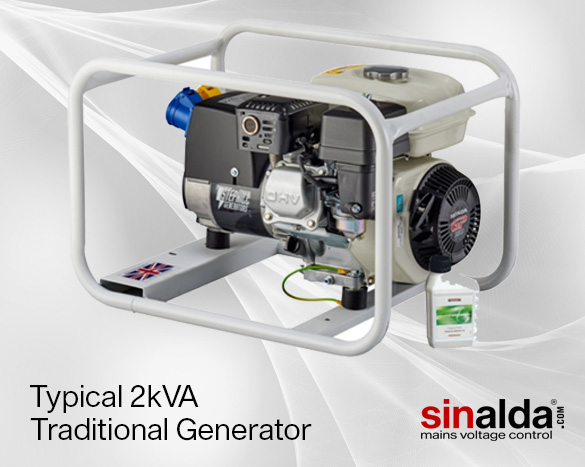
Conventional / Traditional Generators:
They use a motor attached to an alternator to produce AC power. The power quality they generate can be rough, with potential voltage fluctuations, especially under variable loading levels. While they may appear to provide a suitable voltage output within their load rating, the accuracy of the voltage waveform may not suit ‘sensitive’ electronic equipment, and excessive loading may cause severe distortion of the voltage waveform.
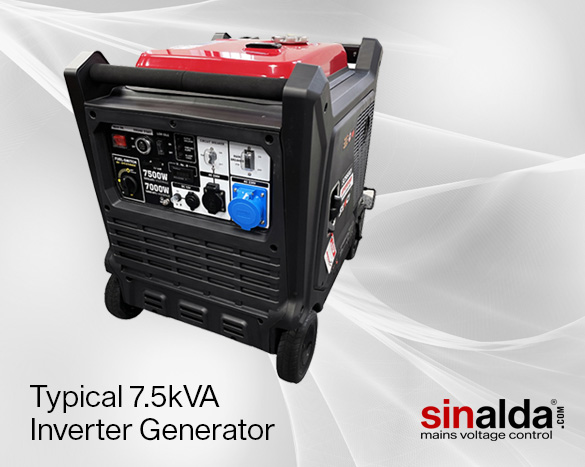
Inverter Generators:
They produce AC power similarly to a conventional generator but then convert the AC power into DC. The DC power is then inverted back into clean AC power. They provide cleaner power than conventional generators with fewer voltage and frequency fluctuations. This type of generator is better suited for ‘sensitive’ electronic equipment such as Computers, TVs, and mobile phones.
An inverter-type generator is usually more expensive than a conventional generator. If the deciding buy consideration is cost, with the buyer unaware of the differences between the two types, it will generally lose out to a conventional generator.
Nature & Level of Loading
Before buying the generator, carefully considering the power demands of any equipment you may choose to power from it is always a good idea. Many users make fundamental mistakes in sizing their generators –
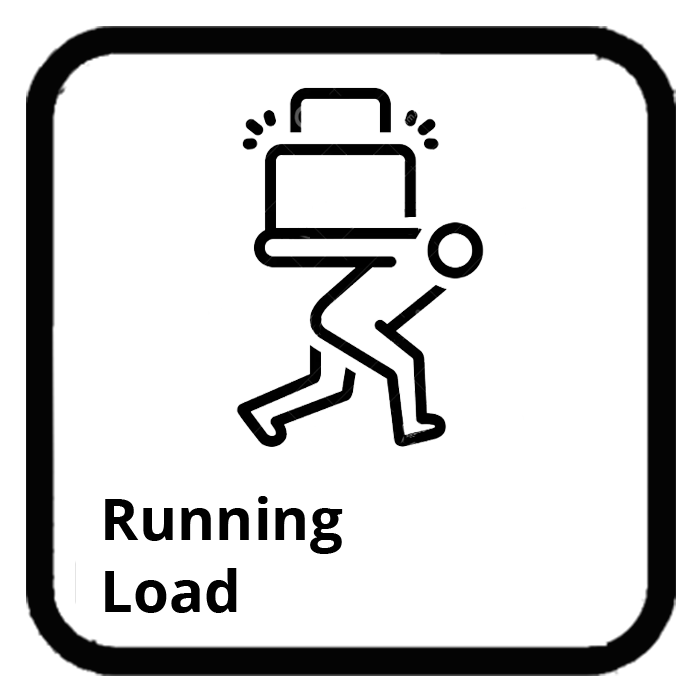
Running Load:
To minimise cost, without considering any initial startup load currents, the User will normally size the generator capacity based on general running demand – allowing no additional headroom. As a result, the generator will have to run virtually continually at full load.
It is generally considered advisable to never run a generator at full load for more than 20 minutes.

Startup Currents:
The startup demand (the amount of power required to start equipment) may be higher than the general running demand. This is especially true when the supported appliances incorporate motors such as refrigerators, air conditioners, and power tools with high starting currents. Regardless of type, due to their limited capacity, small generators incorrectly sized struggle or can even fail to start these loads due to their high initial power demand.
Widely held ‘best practice’ recommends on sizing, you should always look for at least a 20-30% safety margin and consider any startup demands of the load.
We find that the incorrect sizing of the generator and choosing the wrong type for the application are the biggest reasons why a user may look for a voltage stabiliser to solve their unstable generator output problems.
Can a Voltage Stabiliser help?
If you have chosen the correct generator type for the application, and sized the generator in accordance with best practice, taking into account load startup currents, a voltage stabiliser/power conditioner will probably solve your voltage fluctuating problems.
However, if not, then a Voltage Stabiliser could actually make the situation worse!
Here is why –.
A Voltage Stabiliser / Power Conditioner, such as one of our 5kVA VR-5000F or mSVR-5H Single-Phase Stabilisers/Conditioners, is designed to regulate its supply voltage to provide a constant output voltage within the constraints of its specification.
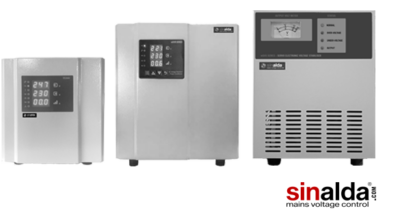
However, when used with a small single-phase generator, where the output of the generator has already been compromised by excessive load, the Stabiliser/Conditioner will draw more current to correct for the low input supply voltage. This will result in a greater load on the generator, making the situation worse than before!!
Conclusion:
So we strongly suggest that if you have voltage fluctuation problems with your small single-phase generator, you should ensure you have selected the right type and sized it correctly before looking for a voltage stabiliser to solve your generator output problems.
If you have not selected the most appropriate generator for your needs or sized it correctly, all you can really do, if you cannot reduce the loading level, is choose, size and buy the correct one!
Otherwise, let’s talk, as we hopefully can help to solve your generator’s unstable output voltage.
To learn more about the Voltage Stabiliser solutions we offer at Sinalda UK for low-cost single-phase generators, please check out the links below:



